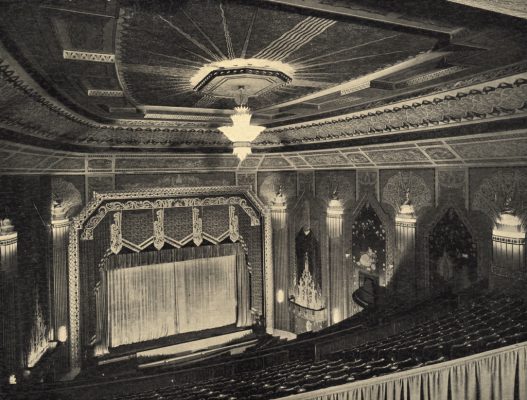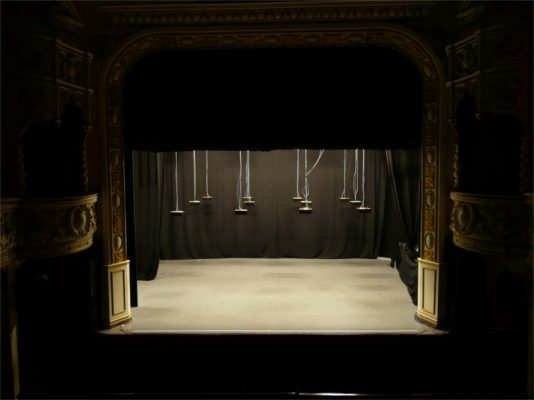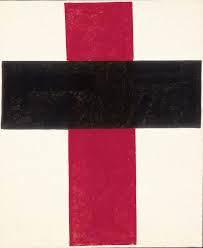Lorrie Moore writes in her introduction to See What Can Be Done that, at the start of her career, she couldn’t turn down book reviews. Likewise, I shouldn’t be doing this but I am. There is no introduction more fitting to Moore’s work than the sentence: ‘I shouldn’t be doing this.’ Presently, announcing my love for her feels like a quaint throwback, like expressing my admiration for the microwave. If this were a love affair I would be showing up late at night, keeping it quiet, cautiously saying, ‘Don’t tell anyone I’m here.’ But I would be showing up. Anyway, you need to read only one page of her, one paragraph, to know that those relationships, the faintly disastrous and embarrassing, are the ones you don’t get over.
Moore is not a particularly demonstrative writer, not didactic, and she communicates no clear, distinct vision of the world. She’s interested in confusion, in what she terms ‘elegant wrongness’. She has a relatively slim output in comparison to others, five story collections and two novels, only one of them of significant length (Gate at the Stairs, but I prefer her first, Who Will Run the Frog Hospital?). The art form she most succeeds at is the shyest – the short story. The second art form she truly succeeds at is the book review, where she obscures herself and hides in the back, behind a list of bigger names: Philip Roth, Margaret Atwood, Don DeLillo. So what’s to be taken from her first collection of essays, criticism and commentary, gathered over her thirty-year career?
Firstly, before matters of the heart, practical business – how to read this brick? I grouped the pieces into book criticism, then her work on television and film, her political pieces then, finally, music. I left the autobiography to last. But what’s to be taken from this book, really? With Moore, I think there is always that italicised ‘really’. How did it really feel – not how was it supposed to feel, not how did it sound, but how did it really feel? She would baulk at the idea that literature contains lessons, that it should be in any way instructive, but there’s something here. Firstly, indulge your passions, however lowbrow. Write rapturously about your heroes (here’s a challenge – read the three essays on Alice Munro in this book and then attempt to write even one word of fiction). Find something you love and prove why. In the spirit of this, I’m here, dishevelled and several decades too late, like a love interest in one of Moore’s beloved romantic comedies, to take her to Prom.
In her introduction she advises that it is essential in criticism, to ‘pick a thing up, study it, shake it.’ As I examine her work, now slightly older than when I first read it, do I realise why I’m so enthralled to her? Is it because of her sense of humour? Surely, it’s not that simple. I’m more sophisticated than that. Then I stopped to consider all the people I know who are genuinely funny – the criteria was tough, they would have to be able to make me laugh if I was dying – and I got to three (I made a list, a sad habit I share with some of Moore’s characters). So maybe it is that simple. She has style, not in the sense of fashion which she is exasperated by and curses heavily, but style where it matters – on the page. She allows herself moments of flashiness. I can’t resist that. She has, certainly in her fiction, the inclinations of a clown. She has to undercut seriousness; she needs silliness. Who else would get away with those two full pages of ‘Ha’s!’ in ‘Real Estate’ in Birds of America? My reasons have nothing to do with feminism. Moore’s characters are too white, too middle-class and suburban, to mean anything in that respect anymore. Besides, she doesn’t write Women! She writes women, lower-case. Admire them? They won’t let you. So I’m going to pick that up and take it out of the room.
It could be her succinctness. In her essay on Friday Night Lights, the delightfully trashy American football show, she tells an anecdote about Kyle Chandler – Coach to his boys – reading the script and announcing, ‘I don’t need to say this speech. I can do it with a look.’ Well, I can imagine Moore, over the years, ripping up ideas for novels and announcing, ‘I can do this with a sentence.’ And she can. Is it her generosity? In her essays, her energy is boundless and curious. She’s capable of celebrating several forms of intelligence and refuses to be a slave to the academic, the strictly literary (she is excellent on the ‘deep and powerful concentration of actors’). Her mind roams freely. It soars. She spends a page on the contradictions of the doomed but sweet, tender Tim Riggins (also Friday Night Lights. I won’t get over him either – a Moore line comes to mind, ‘Win them with your beauty, but catch them off guard with your soul’). Her easy style never betrays how hard she works to understand contradictions, but she does work hard. There is genuine feeling, an insistence on life, in her work that I’ve struggled to find elsewhere. She is – as she finally concludes of Tim Riggins – ‘the realest person in the room’.
There is, of course, another reason why I love her. Recently, an acquaintance of mine commented on a girl we both know who is doing well, and claimed, in a throwaway remark, that ‘it doesn’t hurt that she’s cute’. I let it go, although it struck me as a miserable contradiction. What was I supposed to do? Stand up and storm out? Slam the door like Bette Davis? Maybe I answered it with a look. At times like this, times of dangerous footing, lines from Moore’s stories drift back to me. I can think of no other writer who captured the blinding fog of young womanhood, that seemingly permanent climate, as accurately as she did in her first collection of stories, Self-Help. Not the cruelty, or the necessary paring down of ambition, but the base confusion of it. She knows that the world feels like a party you didn’t attend recounted to you second-hand by a lying partner. Nothing makes any sense. You can’t follow it. Why does the story keep changing? What actually happened? In her essay on Helen Gurley Brown, the saviour of Cosmopolitan, (in a burst of irony, one of many in this book, the woman who told us ‘how to drive men wild’ is now a subject of the woman who told us how to drive them away) she tells an anecdote about how an elderly Brown, gently being pried from her post, was given a facsimile office to keep her happy. The fax machine wasn’t plugged in. Nothing was plugged in. This is also what it feels like to be a young woman. You’re sitting in your office, naively spinning in your chair, waiting for the meetings to start. Oh baby, you’ve made it now! It would be sad, if it weren’t so funny.
If you know her fiction you don’t have to question Moore’s allegiances on this matter but she demonstrates them again here in her erudite essay on the French drama Blue is the Warmest Colour. She is constantly aware of women’s vulnerabilities, the damage that can be thoughtlessly, carelessly done. For a writer famous for her caustic wit – for sentences that hit their targets – she is kinder than you think. She is limitlessly kind. If she walked into that facsimile office, she wouldn’t sneer or mock. She would save her best, most scabrous material for someone with actual power. She might admire your view, compliment your shoes. She already knows where it hurts and that, occasionally, you need a little illusion. Now, that’s cute. That’s so cute it would move you to tears.
The pain in See What Can Be Done comes, as it always does with her, slantways. There isn’t a huge amount of autobiographical material in here. The most striking personal piece is only a few pages long, a humorous description of her honeymoon, made mournful by the knowledge that the marriage will end in divorce ten years later (of marriage she says this: ‘what makes marriage possible is no one actually getting up and running away’). It’s clever, full of wry humour, but she’s in absolute control (that inimitable Moore control; how easily she swerves and misdirects) and she doesn’t welcome you in, doesn’t want your sympathy. You learn nothing, not even her husband’s name. The pain comes later, glimpsed as you speed along. Her essay on the disaster-romance Titanic begins with her then-husband refusing to accompany her to the cinema to see her ‘stupid, teenage girl movies’, and it ends with this paragraph:
Only hopeless romantics need to be told yet again that love is an illusion, that it dies, that it is for lunatics, addicts and fools. The rest of us may occasionally like – even love – a little respite from what we know. That is what Hollywood movies, so humanely, have always been for.
Now read that paragraph again and try to leave her for someone newer, sexier, hipper. You can’t. You won’t get as far as the front door. It’s a moment of genuine unguardedness but, on the whole, if you’re looking for Moore, the woman, in See What Can Be Done, you won’t find her. She writes on several author biographies here, it’s a form she’s interested in, and she nearly always comes to the same conclusion – it’s only in the work that one comes to know an author. So what happens when you return to Moore’s work? If I open that large, orange book – as an aside, orange is the perfect colour for her, the amber traffic light, not ‘stop’ or ‘go’ but something in between – of her collected stories? Does it become clearer? Possibly.
When I was in my early twenties I wrote theatre reviews. I got free tickets, and it was an education, which was helpful because I didn’t pay any attention during my actual education. I thought I was displaying an independent, intellectual streak, but what I really had was a desire to sit, alone, in the dark. I didn’t know it then, but I do now. I had a pen and a little notebook. It made me feel important. I have fits of denial too. If I commit an act of revision – and many of Moore’s stories are acts of revision, thinking you know someone but realising you don’t at all – and go back to her work a little wiser, can I figure out why I like her so much? I can, I think. This is why: her stories feel like performances. Moore understands what it is like to sit in an audience and expect to be moved. She knows what it’s like to wait in the dark. And, most of all, she understands the complete, ecstatic thrill of watching someone with talent get it right. It’s a thrill that can remove you from your own life.
She writes so extensively and exuberantly on writers she admires because she’s grateful. Of herself, she’s not quite convinced. She’s sceptical. She has doubt. I can’t think of another writer whose gaze is so firmly fixed on the exit. But she moves. She writes like an unassuming dancer plucked out of a chorus and given a ten-minute solo. She writes like there is someone out of sight telling her to wind it up. Convince them. Convince yourself. Of what? All of it. She won’t waste your time. She knows you paid money and she’s going to give you a show. Not a line dropped, not a beat missed, no clumsiness. In the small glimpses of her life in See What Can Be Done, you can see the strain, the sweat. You know the cost. If, as Cheever said, the story is ‘an appeasement of pain’ then Moore knows not only how to appease it, but also how to dress it up, put a little hat on it. In musical theatre terms (an art form she appreciates, there’s an excellent essay on Sondheim’s Sweeney Todd) she is Sally Bowles in Cabaret – broken, betrayed, but still hitting those high notes.
In her introduction to this book, Moore mentions an encounter with a man who tells her, ‘your pieces in the New York Review of Books are the only ones I can actually understand’. She knows this isn’t a compliment. Still she takes it as one, finding encouragement where she can. Also if he needs to feel superior to her, if he needs that small patch of real estate, why not let him have it? Someone this invested in illusion could never puncture another person’s. She probably threw her head back and laughed because why not? Then, in her own life, the one she demonstrates here, which is rich and vivid and the only one that truly sustains you, she did the serious lifting, paid attention, saw what could be done. So let’s end, appropriately, with a scene from a terrible Hollywood film, the worst one, where the man turns up at the girl’s house, uninvited, with cue cards. I can’t remember what any of those cards says except one ‘My wasted heart will love you.’ Well, even as time marches on, my wasted heart will love her.




